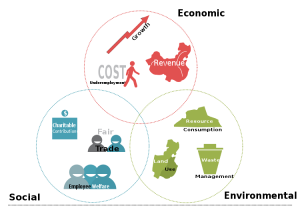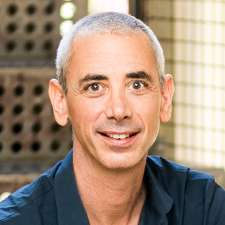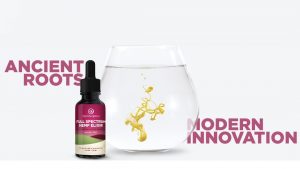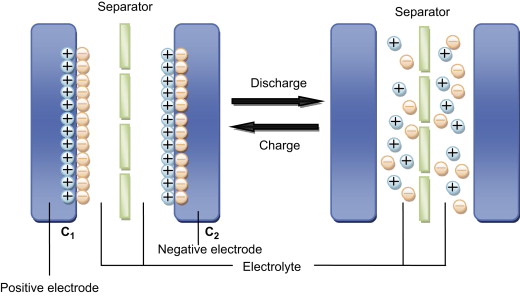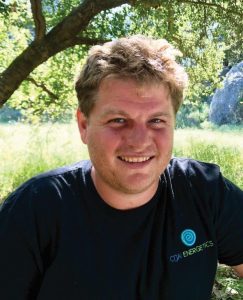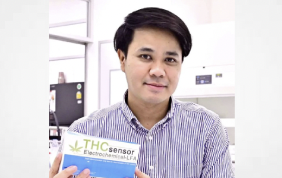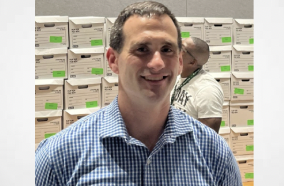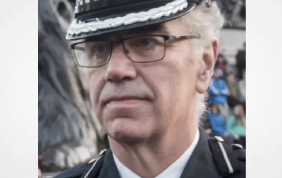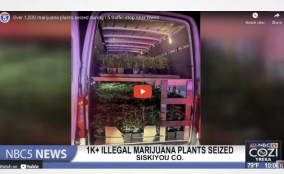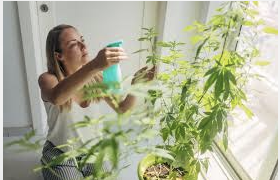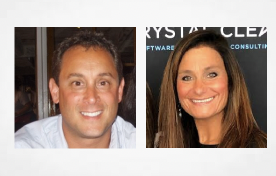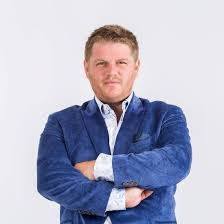Ojai Energetics is more than just a brand with exceptional products, they have a very specific mission to achieve……
“We exist to be a catalyst for good. With our non-negotiable, triple bottom line policy of putting people and planet before profits while being fiscally successful, we are being the change we want to see in the world. We strive to run our company with these values, exemplified by running our servers with wind energy, and ensuring access to health products for those who cannot afford them.
If you wish to re-publish this story please do so with following accreditation
AUTHOR: Heather Allman
PUBLISHER: CANNABIS LAW REPORT
IN-DEPTH INTERVIEW with The Tesla of Cannabis: Will Kleidon and Ojai Energetics
PERSONAL BACKGROUND
William Kleidon – Founder, Entrepreneur, Innovator, Visionary (⁵)
COMPANY INTRODUCTION
Ojai Energetics is more than just a brand with exceptional products, they have a very specific mission to achieve:
“We exist to be a catalyst for good. With our non-negotiable, triple bottom line policy of putting people and planet before profits while being fiscally successful, we are being the change we want to see in the world. We strive to run our company with these values, exemplified by running our servers with wind energy, and ensuring access to health products for those who cannot afford them.
We work to build relationships with the farmers who grow the ingredients we use, ensuring fair trade wages, and only supporting regenerative farming practices. We will always ensure from seed to planting to the final products in your hands that we have made the world a better place without cutting corners. We are always working to improve the standards for all the communities we touch.
By honoring and valuing people, the environment, and all other members of Life (while still being a successful business) we are a living example that success does not need to be at the expense of others well being.”
THE TRIPLE BOTTOM LINE
“The triple bottom line is an accounting framework with three parts: social, environmental and financial. Some organizations have adopted the TBL framework to evaluate their performance in a broader perspective to create greater business value. Business writer John Elkington claims to have coined the phrase in 1994.” (¹)
On July 29, 2020, I had the unique pleasure of talking with William Kleidon for this in-depth profile. He is the founder, innovator, and visionary at Ojai Energetics, a triple bottom line-driven cannabis technology company.
Will has such a refreshing and interesting perspective on our current world and how to make it a better place for everyone, through one single, highly catalytic plant: Cannabis.
CANNABIS LAW REPORT: Let’s start with an easy question. Do you have a life motto or favorite quote?
WILL KLEIDON: “‘Love is the answer.‘ I’ve had this mantra since I had a near-death experience at sixteen years old. That is what came out of it, like an epiphany, and ‘Love is the answer’ has guided my life ever since.”
CLR: I’m jumping right in. Mainly, there are two distinct kinds of cannabis: compassionate or patient-centric and capitalistic or profit-centric. Firstly, how do you reconcile the two in order to maintain a balance?
WK: “Capital, or money, is the result of generated value, and there are ways, from a systems design approach, that you can align value generation in a manner that is symbiotic, versus parasitic.
A concrete example is that we don’t turn anyone away if they can’t afford our products, and we provide some value added with our bioavailability and fast onset, offering the consumer a price point that has been accounted for.
And simultaneously, we are able to take care of people who aren’t able to access it at that price point. We have no issue with that, and it works very well for us.”
CLR: Secondly, how does the Ojai Energetics mission to “be a catalyst for good” align with your own personal life mission —how do they coexist?
WK: “Since the endocannabinoid system regulates every other system in the body, the principal comes into play that you have got to love yourself so that you’re able to love others. If you’re not loving yourself, then you can’t really love anyone else.
So taking care of the internal zone, the physical zone, enables people to then go out and feel better and have more opportunities to abundantly create, and really ‘show up’ in a symbiotic manner. There’s a very concrete way there: if you’re feeling good, then you are more likely to help someone else feel good.
We build enough layers of regenerative farming practices, so when people are supporting us, they’re actually supporting building topsoil and biodiversity. And we’re able to stack such long-term benefit into cannabis and smoking weed.“
CLR: You are known as a pioneer and futurist in the hemp and cannabis industry – and for cracking the CBD code by creating “the cleanest and most effective CBD-rich hemp products on the planet,” according to Ojai Energetics.
There are quite a few codes out there to crack, so I have to ask: why the cannabis plant?
WK: “It’s probably one of, if not the most catalytic plants for a multitude of systems –from building topsoil, to feeding our body’s endocannabinoid system, to clothing that doesn’t require treatment with pesticides or toxins, to helping sequester water. There’s a plethora of multifunctional, substantial benefits there. It can add so much value.”
“The sustainability revolution is challenging business managers to reevaluate how they operate their enterprises and how they measure successes.” (²)
~ Andres R. Edwards
CLR: Today, the same industries –resource extraction industries– that helped build the foundation for the Industrial Revolution are rescheduling and seeking alternative ways to manage their operations. Tell me about your supercapacitor.
WK: “Well, there’s a ton of renewable energy sources; the problem is storing it. We brought in a crew from Stanford University and figured out how to make a scalable supercapacitor to store energy, at a fraction of the cost. We’re now partnered with a national lab, specifically Lawrence Berkeley National Lab, where they’ve checked the physics and said ‘Oh my goodness, this is going to work.’
Once that project launches, we’re going to be literally building batteries to power cars, cell phones, nations, microgrids –all from the hemp or cannabis plant. Yet again, cannabis has shown up as a catalyst for a new era.”
CLR: After looking over your resume and doing some research, your titles as a Founder and Entrepreneur are clear, but you also have the impressive reputation of being an Innovator and Visionary.
Beyond being the brainchild behind Ojai Energetics, give me some examples of your typical daily responsibilities, or how are you actively achieving those goals of continuing to innovate and be visionary?
WK: “I’m Head Chairman of the California Hemp Council. We couldn’t grow hemp for flower in California, which is interesting at the federal level, so we initiated draft guidance to help initiate a path. At the California Hemp Council, we are actively shaping, and, on the ground, driving the process and efforts of making laws in the state, so that’s one way I innovate.
Another way is partnering with a group who are innovators and thought leaders, called Revive Hemp, looking at applications of how we can pivot to use renewable and regenerative systems and materials, and putting some of our intellectual property to hemp processing in order to truly bring hemp’s renewable properties down to scale.
Once that clicks in, and we can get at scale, we’re talking about creating more affordable, regeneratively grown, CO2-sequestered building materials that are not only cost effective –if not more cost effective– but are also healthier, not just for the user of the materials, but the planet itself.
One of the ways I can innovate like this, and how I am able to do that, is critical: I’m able to drop into Flow State.”
FLOW STATE
CLR: Which is? Please explain and tell me about Flow State.
WK: “Flow state is a neurobiological state, that my good friend and advisor, Stephen Kotler –who’s one of the leading experts on flow performance– taught me; and there’s a method for dropping into flow state.
For example, Beloit College did a study looking at executives and flow, and found that a few days of work ‘in flow’ are equivalent to five days of an executive working outside of flow state. We’re talking about a massive performance increase.”
“With Steven, we’re running the first studies looking at how the endocannabinoid system interfaces and interacts with flow state. It really does change the game. You’re essentially able to quiet the frontocerebral cortex, access the unconscious with a much greater data processor really running the show, and there’s a line in between the two. Your ability to think creatively increases and your performance skyrockets.
But flow is not just a peak state or a state of being ‘on.’ It’s really a cycle of creativity and maximum performance, followed by a recovery state, where you’re able to integrate the insight. One of my favorite phrases is ‘don’t trust the dopamine.’ It’s a great pattern-recognizer, but oftentimes, it can be excessive.
When you get your insight in peak flow state, you then cross-check your ideas in the recovery phase, when you have less stimulation. And ultimately, if an innovative idea holds true in the recovery phase, then you know you’ve got a winner. Most people think of flow state as an additive process, but flow is actually a reduction of function, not an increase. I mean, your productivity skyrockets, as I mentioned, but you’re reducing the noise and the extra stimuli in your mind.” (³,⁴)
CLR: You just explained to me the way I work! For years now, since college, I go through periods of time where I produce mass amounts of work, and then I crash, so to speak. So, really, thank you for helping me to really understand more about myself. I’ve been operating in ‘Flow State’ all this time. Amazing discovery for me!
CLR: Okay, let’s switch gears and talk about the triple bottom line at Ojai Energetics. What is the importance and true value to you personally of having that triple bottom line of forging healthy and positive equitable, environmental, and economical impact and growth?
WK: “Functionally, a triple bottom line enables us to build a better world, and truly… wow, that’s a big one, but to capitalize a better future for everyone.
It really enables us as humans to operate as less of a parasitic, consumption-based mechanism. But this is actually a necessary component to get to really powerful, symbiotic integration of the biotic –and that’s a positive outlook.
Long answer: I liken it to caterpillars where they start out in this system as a parasitic in ecology. What they’re doing is that they’re tapping all this energy to go through this spectacularly transformative process, where they break down and literally re-code into this being that has metamorphosed.
When they finally break free of the chrysalis, they emerge as these flying beings who are now pollinators and actually build ecosystems, multiple ecosystems. They go from nearly destroying one ecosystem to building many.
I believe that we as human beings are ultimately functions of nature and are following a similar pattern, and I believe we are at that stage of interfacing. We’re at the point where we perceive changes not as a foreign threat, but as a future, better version of ourselves and we need to protect it. And an exponential transformation happens.
As humans, we’re past critical mass and we’re able to now interface with all of the structures and energy to reconfigure the system to where it’s truly abundant to everyone, and much more enjoyable.
Short answer: There’s a lot of work to be done. That’s why we do what we do at Ojai, and I like to wake up everyday realizing that we’re changing lives and building a better world.”
CLR: Is this the type of thinking that led to your patented water-soluble tech and can you tell me more about that?
WK: “The core principle of Ojai Energetics back in 2014 was to be a catalyst for change. What better plant than hemp to do that. Added to the fact that I couldn’t find any reliable CBD in 2013. Then it started popping up on Amazon and other websites around the end of the year, so I ordered some. It showed up in my mailbox, but I was unable to ever get a Certificate of Analysis or COA for it.
Turns out, it was indeed derived from hemp, but it could not be legally used or sold domestically. I grew up around cannabis, so coming from that background, I figured someone would be able to get me quality, verified CBD. But I could not find any. So Ojai Energetics was launched.
Subsequently, we were the first company to do independent third party lab testing per cannabis batch. Our efforts in this area set a precedent and now that is the standard: that you have your cannabis or CBD or hemp batch tested by an independent third party, top tier facility, and have that COA, or Certificate of Analysis, that consumers depend on for their individual empowerment. It helps nurture an environment of personalized medicine.”
CLR: Why the need for such extensive proprietary development at Ojai? How has that robust IP catalog that you’ve built added value to the larger national cannabis and CBD space?
WK: “We built it with the agnostic view and distinction that cannabis is 0.3% THC or below. Our IP is for effective modes and systems of delivery, backed by the leading IP globally, so that we can really take the time to do proper due diligence and research and partnerships that are truly adding value, to long term futures.”
CLR: Your ultimate end game, then, ties in with your life motto: Love is the answer in that you know we can change the world, that we have the ability?
WK: “We literally can change the world, and really, it’s all about weed.”
CLR: Yes!
WK: “And straight up, it’s a really fun time to be alive. I think we’re sitting on the very verge of that exponential and we are about to see cannabis skyrocket.”
CLR: Agreed, and there’s so much happening just in Florida’s market, where I live. This would be a good time to ask your thoughts on vertical versus horizontal integration within the cannabis industry. Is it easier to operate in one more than the other, in your opinion?
WK: “That’s a great question. The end game is maximum uplift for minimum insult.
You do that by building an alignment of natural systems opposed to trying to go against them. You work with the natural systems instead of trying to control them.
Integration is basically an adaptive systems approach, where you take the raw force up front to let the natural systems do the work. But as to your question, it really depends on each unique scenario. In some areas, it makes sense to have vertical integration. In other areas, horizontal integration makes more sense with collaboration.
Ultimately, it all comes down to scale and quality. You have to be maintaining a growth mindset, however, and applying that process to each step along the way.”
CLR: I was reading about the 1992 Earth Summit that led to Bill Clinton’s President’s Council on Sustainable Development, or PCSD. One of their missions specifically was “to forge consensus on cannabis policy by bringing together that first interest to identify and develop innovative economic, environmental and social policies and strategies.” (²)
You were ahead of the game with that too. Tell me about the diverse group that makes up the Ojai Energetics board and the importance of these choices and this diversity?
WK: “I think that collaboration, that synergy is not always greater than the sum of its parts. You can only innovate when you have several productive parts of the whole working at the top of their game, at maximum productivity. Sometimes you get these experts, and they lose growth mindset and they see through ‘blinders’ that need to be removed.
So pulling in luminaries from multiple fields –and given that cannabis generally disrupts positively every sector on the planet, you want to have luminaries from all of these different fields where they can challenge paradigm, and pull it together and intervene quite well. That was the drive there to have a brain trust and industry outreach into all these different sectors.”
CLR: This is an industry that has grown primarily off consumer demand and behavior. What cannabis behaviors or shifts have you seen happening since COVID-19, like corporate behaviors.
With your diverse board, I assume you probably get more insight than other companies would?
WK: “Yeah. With COVID, we’re seeing much greater productivity because the traditional travel schedule is exhausting, and there’s a lot of inefficiency in between planes and whatever while you’re traveling. Whereas now, you’ve got this much more kind of closeness to the power of the internet where we’ve got this collective group being forced to figure out how to do ‘it’ much more effectively.
What we’re seeing is a lot more efficiency in certain sectors that, typically, you wouldn’t expect it, but now starting to crank out and people are getting more effective. And with that, the downside is that you get Zoom fatigue and moreseo, you’re ‘on’ 24/7. So, people need to prioritize. Life does not have exponential growth. It is an out-of-balance system.
You can always have periods of this, but you truly always want to have a rhythm of expansion and stasis, a pause, a contraction, a pause, then another expansion –that’s the breath of life, so to speak. And it’s universal to life.
Right now, we’re finding people getting a little bit more aligned with the natural rhythm and finding it being louder when they’re out of that natural rhythm of expansion and contraction. People are coming back to connecting with the spaciousness of Nature and finding rhythms with recovery, like the flow cycle we discussed, but not just as an experience. I think we’re seeing this in a lot of ways in different sectors of contraction.
The beauty of the contraction is that it enables you to reassess, and see very rapidly in real life time what systems aren’t working, and gives you the ability to re-correct course. Because once you hit expansion, which is the thing you get when you’re entering a growth phase, a small inefficiency at a certain scale becomes a gaping hole once you get to the next phase.
We’re currently seeing, with the M & A stage in cannabis, for example, a lot of contraction of the market in certain sectors, while this outside intelligence or pause is coming in. And it forced us to examine how we can better align and adapt.
That’s ultimately what our super powers are as humans: we are the most adaptable creatures. Now, thinking out of the traditional box, we’re seeing a lot more cross-industry collaboration and interfacing of certain sectors. Remember, there’s pros and cons with anything.”
CLR: So what you’re saying is that right now, overall, we’re transitioning or morphing through a metamorphosis of our own?
WK: “Yes! But we’re not just going through the cycle anymore, we’re evolving and spiraling up to a way of living that is far more harmonious and symbiotic. We’re just at the tip of the iceberg. Part of that exponential growth is painful. For example, we’re witnessing a lot of old stagnancies that are now getting shaken up. They’re not hidden anymore; they’ve come to the surface.
With the paradoxical theory of change, you can’t change something if you don’t accept it exists. As organisms, we humans have to look at the old stagnancies –especially concerning cannabis– and accept them, so that we can then transform them to the healthy, next level. That’s what I’m seeing in a slew of industries right now.”
CLR: I agree. This metamorphosis is happening. It’s an evolution and people are adapting, changing their mindset, as far as what is important.
This goes back to what you were saying about priorities. It is all coming to the surface, whether we as humans like it or not, correct?
WK: “Exactly.“
CLR: Tell me about your vision for the future of cannabis. What are your thoughts on the correlation between what humans are capable of –the evolution and thinking we are capable of– and where we are now concerning cannabis?
WK: “We’re just scratching the surface of cannabis. We’re just now taking a collaborative, multidisciplinary approach. And looking at a baseline plant that provides 50 catalyst system interruptions that we know of right now. With this current emergence out of cannabis prohibition, that number will continue to compound and accelerate.”
“Human subtlety will never devise an invention more beautiful, more simple or more direct than does nature, because in her interventions, nothing is lacking and nothing is superfluous.”
~ Leonardo da Vinci
CLR: Moving forward, what metamorphosis or visionary ideas are you seeing come to fruition in the national landscape?
WK: “Ultimately, cannabis will be driving the future. That’s why our tagline is ‘Ancient Roots, Modern Innovation.’ Cannabis is ancient, and we’re not inventing the wheel, we’re just using modernity, keeping it true to the roots while simultaneously expanding up and spiraling up.
We’re now entering the symbiotic ecology, where you get this multidisciplinary, collaborative foundation. Companies and groups that have a foundation rooted in reality and not making a quick buck are now rising to the top, like cream, and with that stability, expanded boundaries enable effective collaboration.
I think we’re currently entering this era, in cannabis and life, where you’re going to see massive innovation emerge on collaborative modeling. What’s amazing is when we tap into proper designs.
There’s a systems design issue for abundance on the planet; not a resource issue. And now we can get together and redesign and utilize the benefits of this current growth period. We can accept the stuff that’s not working, change it, transmute it, and realign into a systems approach that truly creates regenerative abundance. It’s a beautiful geometry that works.“
CLR: Ojai is definitely leading the charge. You’re branching into all these different sectors, Energy, Sustainability, Farming, Wellness, the whole gamut. With your triple bottom line goal and your IP catalog in mind, which sector or sectors of the cannabis industry are you currently prioritizing more than others?
WK: “In the first days, we wanted to get the cannabinoid systems up and running. So that meant focus on the consumer front, but it also meant just realizing there was a plethora of bad CBD products. That was our core focus in Phase One.
Now, we’ve got our ‘Powered by Ojai’ or ‘Powered by OE’ model in Phase Two where we’re plugging into, with our patented formulations, where we can scale them up there rapidly and provide beverage companies with accurately effective dosages that have benefits to the user and it plugs us into all these different companies to really elevate their impact for good. That’s where we are at now.”
CLR: In what sector(s) are you investing most of your future time?
WK: “We’re really going to watch that develop and deal with that. And then simultaneously, the next phase, I truly think, is that critical point: our clean energy technology and our supercapacitors. Working with the Lawrence Berkeley National Lab, once we do that acceleration, we’re going to have a massive supply of hemp –which grows like a weed, right, regeneratively.
So that’s why our partnership to provide hemp is so critical, to really bring a scale and mesh it with our connections of lobby, with some of our advisors who have really fantastic connections on the political side and making sure that carbon credits are done right and we can actually take care of farmers on a workable scale.
On the medical side, we have this amazing platform of issued patents where we can really deliver and innovate in life sciences and get that off the ground. We are working with the leading medical scientist, so that’s going to be very exciting and important. There is so much health benefit in this plant, and we are just scratching the surface.
With the same systems approach, hopefully, we get to evolve and correct some archaic models and be part of the regenerative influence with an actual, sustainable model approach, which is happening in all sectors already. It’s very exciting –I’m living my dream.”
CLR: Tell me about your personal vision for the U.S. cannabis market in, let’s say, five years. What do you see already running smoothly in place in five years?
WK: “Full federal legalization of the cannabis plant. I think that’s actually going to happen next year, and I’m pretty positive on that. It’s already in the beginning phases. And then we’ll aim for the galaxy, but in five years?
By then, we’re going to be really far along, from a planetary cultural perspective, of real, tangible indoctrination and adaptation to regenerative models. Like our supercapacitors. First, in 2014, it was like ‘oh my, we can make supercaps out of hemp.’ Where now, the hemp plant is indeed able to make that.”
CLR: Which is somewhat weird, but wonderful!
WK: “Yes. But nothing really happened on that front at the time, because I’m sure there were some scale issues. And then, years later, I was at a bar in Texas and as I looked around, everyone was wearing these name tags. And I was, at that exact time, literally sitting there thinking ‘Why don’t we have electric jets?’ They are such a big factor for toxins and pollution, and I wondered why haven’t we gotten there yet.
I learned through various conversations that I was surrounded by the biggest aerospace convention in the world. I thought here’s my chance. And I asked a gentleman wearing a name tag what he did for a living. He responded by saying ‘I design jets.’ So I asked him ‘Why don’t we have electric jets?’ He tells me, ‘Well, because the energy storage battery would be too heavy.’
I continued, ‘So if you could 3D print graphing vectors into the fuselage of the jet, could you have an electric jet?’ He quickly answered, ‘100% it could, yes.’ The reason that hasn’t happened is because it’s not cost-effective. Plus there were scalability problems.
And I went home, dropped into flow state, and covered all the known systems that could work, from jets to rockets to office computing to deep core mining to cell phones. We figured out how to scale it and that was a huge catalyst there. Possibly, the highest concentration of Nobel Laureates were on the panel and they looked at it and the physics, and that told us it was actually going to work. We could power a monorail.
So in five years, if we do it right, we can have everything from flying cars and drones and jets that are fully powered by hemp, and made out of hemp. There’s no reason why we can’t.
And there’s all these industries, including older industries, that need to adapt or they’re endangered. I strongly feel that we’ve hit critical mass, that we’re at this point of perfect timing for the adaptive and transformative process that must occur.
I firmly believe that in five years, we’ll be living in a much different, and better, more equitable and abundant world. But there’s plenty of work to be done to have such a life.
We’re sitting on the precipice now, and innovation tends to come in leaps and jumps. We’ve been riding this exponential uptick concerning innovation, and we’re sitting at the beginning of the curve. In five years, we’re going to be going pretty vertical with steady effective and regenerative growth.”
CLR: So similar to a hurricane, where there’s a calmness with the storm that still has monumental effect, yet brings recovery and growth in its wake, striking a balance?
WK: “Yes! Exactly.“
CLR: What keeps you awake at night?
WK: “There’s so much to be done –in a good way. For better or for worse, I never stop running game theory in my brain. I’m modeling and that includes looking at problems.
You can’t grow without looking at the problem and acknowledging them with acceptance. Only then can you discover a revolutionary solution and help guide others through this often uncomfortable growth stage.
It takes introspection. It’s not easy and it’s not for the faint of heart, but that’s why we do this at Ojai Energetics. We want to help all people through this difficult growth phase.”
CLR: What is the best advice you can offer to other individuals and companies in the U.S. cannabis and hemp space?
WK: “There is a lot of bad and misinformation out there, but you can be confident that the truth will always prevail. Provide proper solutions for others, because the science doesn’t lie. You can always trust the science.
And in this age, we have the Library of Alexandria at our fingertips via the internet and people are getting much more sophisticated at research.
People are becoming more individually empowered to better take care of themselves and are ready to undergo that necessary metamorphosis in order to improve, to change course, to adapt to becoming more discerning consumers. And ultimately, to grow as human beings. We try to be a beacon in a game of chess, while everyone else is playing checkers.
My best advice for everyone is to just focus on the science. Do your due diligence and really focus on the science and impact long-term. Your passion is your personal gold star, and with that passion, you have something that you can offer to the world and to the planet to make it a better place for us all.”
FURTHER READING FOR CONTEXT
¹ Triple Bottom Line Accounting Framework. Accessed August 9, 2020.
² Andres R. Edwards, The Sustainability Revolution: Portrait of a Paradigm Shift. 2005.
³ Mihaly Csikszentmihalyi, Flow: The Psychology of Optimal Experience. 2008.
⁴ Kenji Katahira, Yoichi Yamazaki, Chiaki Yamaoka, Hiroaki Ozaki, Sayaka Nakagawa, and Noriko Nagata, EEG Correlates of the Flow State: A Combination of Increased Frontal Theta and Moderate Frontocentral Alpha Rhythm in the Mental Arithmetic Task. 2018.
⁵ Visual Resume for William Kleidon. Accessed August 11, 2020.
Copy of Will Kleidon - CBD Expert_Speaker - Public Relations 2020 (2)

